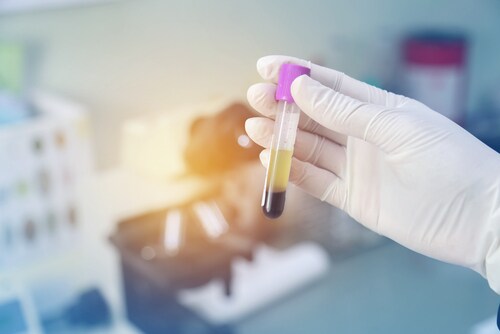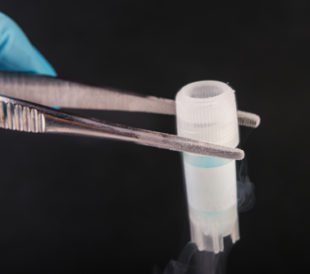 Differences detected in respective biobank collections are more dependent on preanalytical factors than on the inherent differences among the samples. Therefore, there is a parallel emphasis on standard protocol for biological sample collection and storage and identifying specific biomarkers as quality controls to assess the effects of preanalytical factors on variability in the results. Mateos et al. (2016) used different, complementary proteomic techniques in separate, coordinated laboratories to search for quality biomarkers that would allow assessment of integrity and purity of plasma samples stored in biobanks.1
Differences detected in respective biobank collections are more dependent on preanalytical factors than on the inherent differences among the samples. Therefore, there is a parallel emphasis on standard protocol for biological sample collection and storage and identifying specific biomarkers as quality controls to assess the effects of preanalytical factors on variability in the results. Mateos et al. (2016) used different, complementary proteomic techniques in separate, coordinated laboratories to search for quality biomarkers that would allow assessment of integrity and purity of plasma samples stored in biobanks.1
The authors used blood samples from 100 donors collected by seven different Spanish biobanking facilities with the same standard operating procedures, based on recommendations of the Human Proteome Organization (HUPO). To analyze the effect of preanalytical conditions, they subjected the samples to the following after collection:
- A delay of less than four hours at room temperature after blood extraction, simulating the daily routine of a clinical laboratory processing local samples.
- A 24-hour delay at 4°C, reflecting those samples arriving from external laboratories.
- Repeated freeze–thaw cycles to evaluate the effect on plasma protein integrity. Specifically, they subjected samples to one, two and three cycles of freezing and thawing.
Before performing proteomic analyses, Mateos et al. pooled the plasma samples to deplete them of abundant plasma proteins before storing them at −80°C. They then used a shotgun proteomics approach to detect biomarkers in the samples. Specifically, their analyses included solid-phase extraction matrix-assisted laser desorption/ionization time-of-flight (SPE MALDI-TOF), difference gel electrophoresis (DIGE), targeted nano liquid chromatography–tandem mass spectrometry (nLC-MS/MS) and shotgun (isobaric tags for relative and absolute quantitation [iTRAQ] and nLC-MALDI TOF/TOF) proteomic techniques.
Using these approaches, Mateos et al. did not find any significant changes as a result of delays in blood processing or the number of freeze–thaw cycles. All samples had similar protein distributions except those analyzed by DIGE, in which they found a variation in concentration of several hemoglobin isoforms when there was a delay in blood centrifugation.
This work suggests that blood proteins in plasma may be insensitive to preanalytical variables such as delayed processing and freeze–thaw cycles when analyzed at the peptide level. Furthermore, the strength in the study comes from the broad set of proteomic approaches that the authors applied. They caution, however, that while their analyses provide strong evidence for blood being immune to preanalytical variables, other analyses, such as immunoassays directed at intact proteins, where collection protocols may have different requirements, may still be affected.
Reference
1. Mateos, J., et al. (2016) “Multicentric study of the effect of pre-analytical variables in the quality of plasma samples stored in biobanks using different complementary proteomic methods,” Journal of Proteomics [Epub ahead of print], 150 (pp. 109–120), doi: 10.1016/j.jprot.2016.09.003.




Leave a Reply